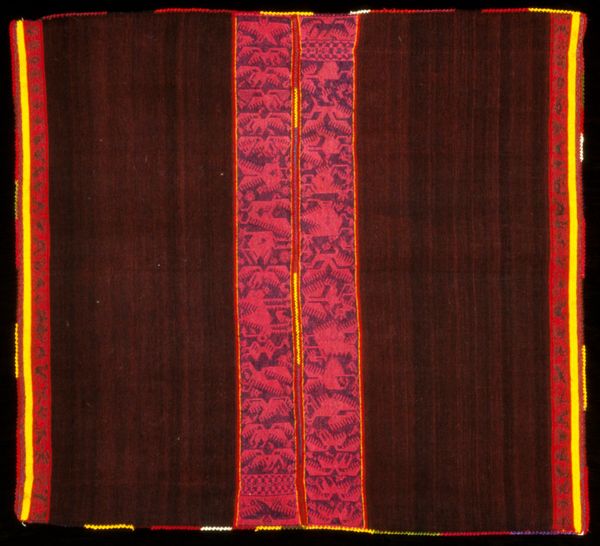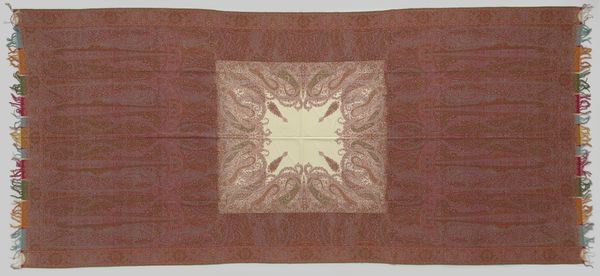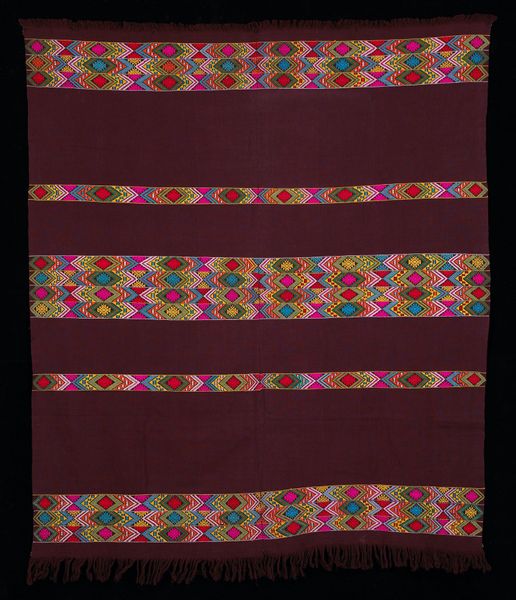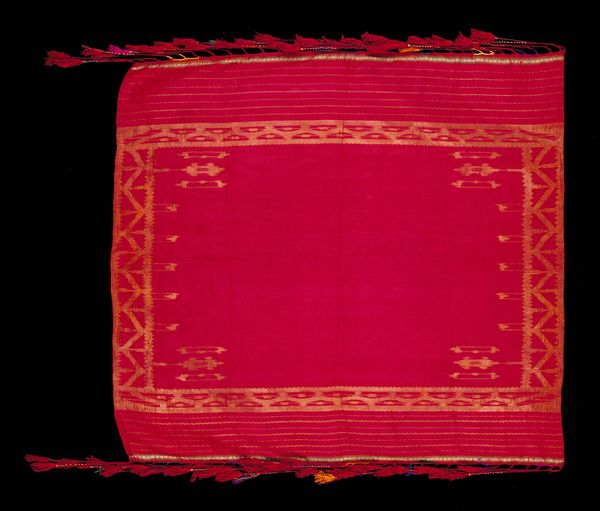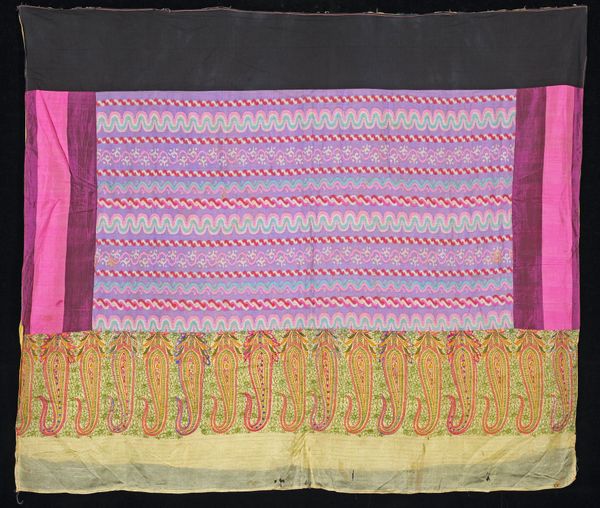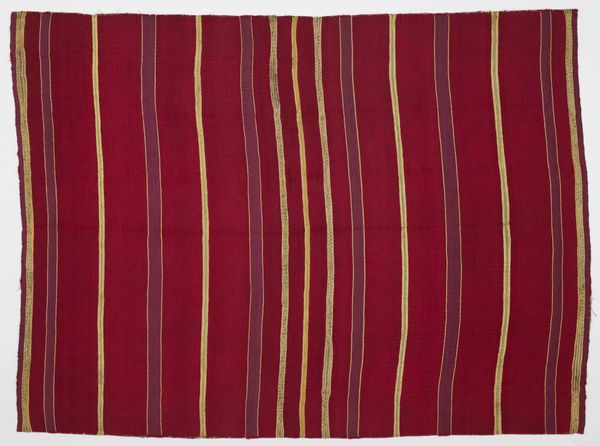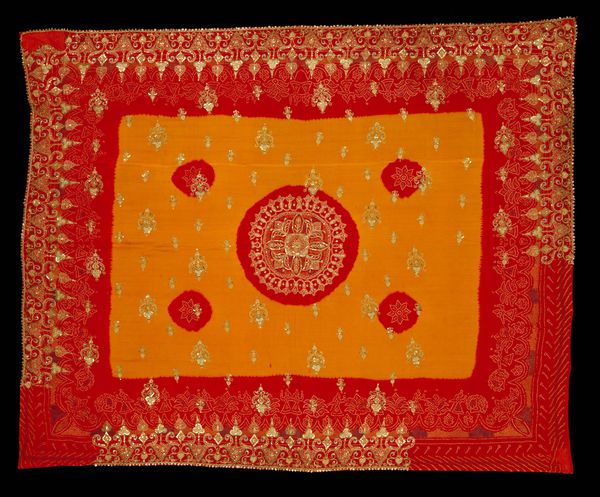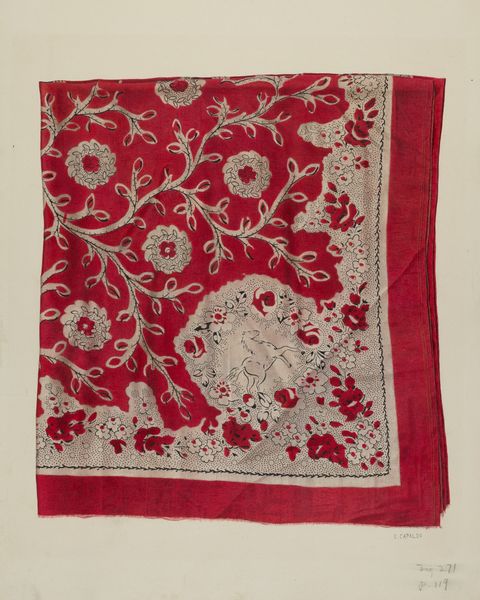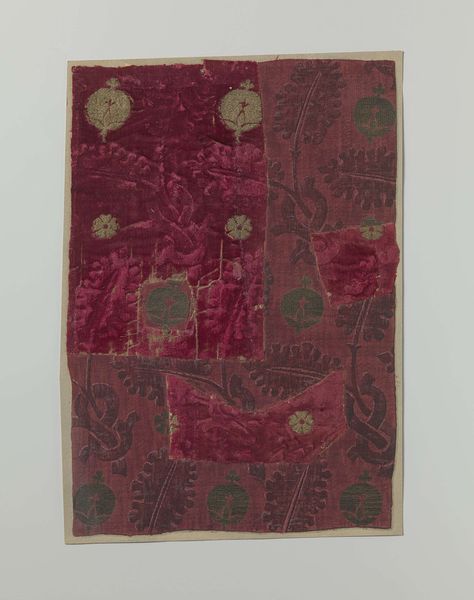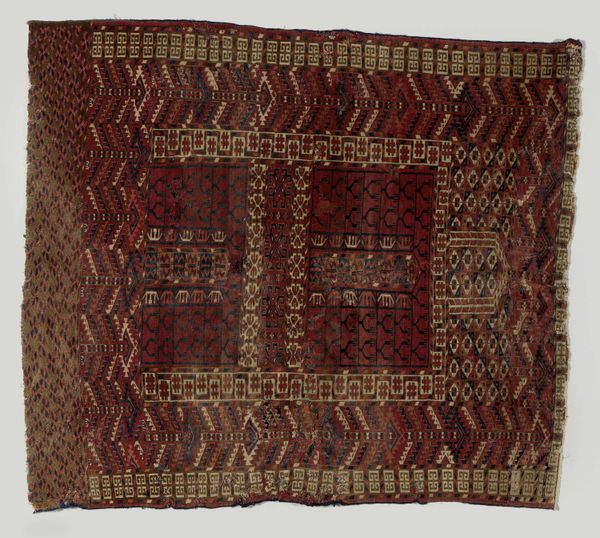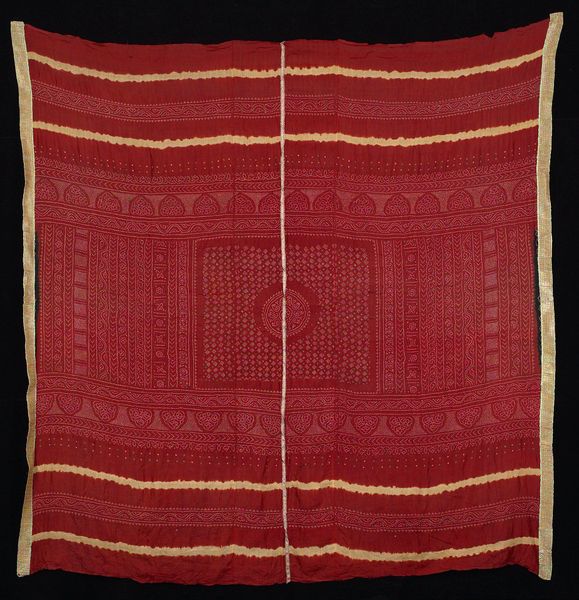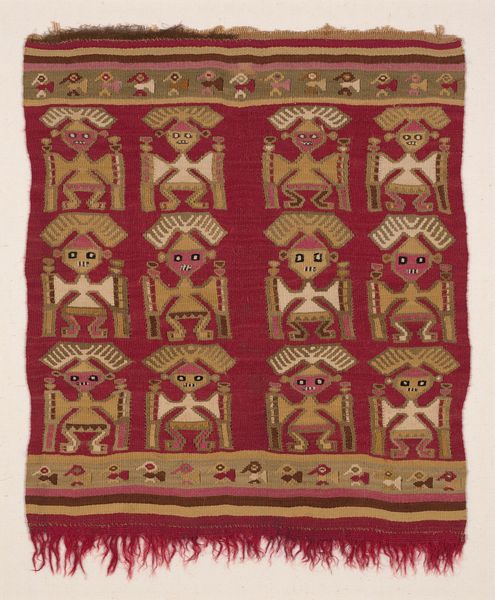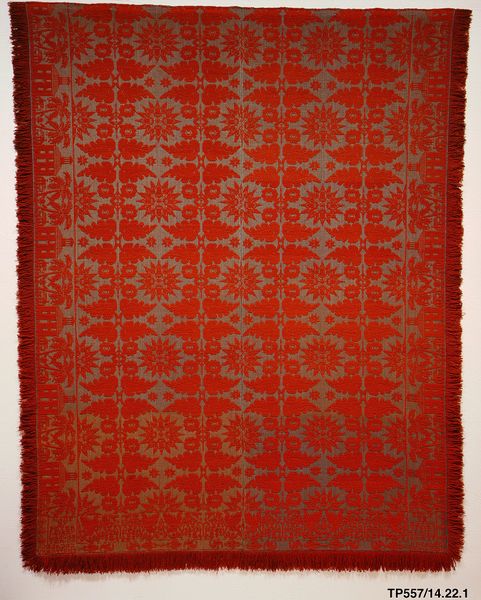
textile, cotton
#
african-art
#
fashion mockup
#
textile
#
clothing promotion photography
#
collage layering style
#
fashion and textile design
#
hand-embroidered
#
fashion based
#
geometric
#
line
#
cotton
#
textile design
#
yoruba-art
#
imprinted textile
#
sketchbook art
#
clothing design
Dimensions: 50 x 84 in. (127 x 213.36 cm) (including fringe)
Copyright: No Known Copyright
Editor: Here we have a 20th-century Agbada, a Yoruba textile piece at the Minneapolis Institute of Art. The garment's stripes and geometric shapes give it a very striking look. What stands out to you in terms of its materials and context? Curator: I see a fascinating intersection of status, skill, and symbolism embedded in this Agbada. The very choice of cotton, a traded commodity, speaks to wealth and access. We should consider not only its aesthetic value but also how the labor involved - from cultivation and weaving of the fabric, to the embroidery - contributed to the garment's overall significance. The embroidery isn't just decoration, it represents skill. Editor: So you're suggesting we look at the 'making of' as central to understanding it? Curator: Precisely! How do the materials and techniques elevate the status of the wearer? This wasn’t mass-produced; it was a careful expression of cultural value through painstaking, skilled craftsmanship. Think about who had the leisure time and specialized skill to create it, and then, who had the wealth to acquire it? It embodies layers of social and economic meaning far beyond its function as mere clothing. What impact did international trade have? Editor: I hadn’t considered the raw cotton itself as a statement. Curator: And think about the geometric patterns! While aesthetically pleasing, they carry layers of encoded cultural knowledge passed through generations of artisans. This Agbada prompts questions of cultural consumption and challenges the high art versus craft divide. Editor: Now, looking at the work through a materialist lens, it tells a story of resources, labour, and societal hierarchy all interwoven, literally, into the cloth. Curator: Exactly. The finished product becomes almost a map of these relationships. It helps us reflect on consumption then and now, challenging any romanticized vision of "traditional" art forms.
Comments
minneapolisinstituteofart over 1 year ago
⋮
In Islamic societies all over West Africa, high-ranking officials wear voluminous robes with lavish embroidery. The volume of the garment creates an aesthetic of “bigness” that enhances both the physical presence and symbolic importance of the wearer. A "malam", a male religious specialist with knowledge of Arabic writing, embroidered this robe by hand. The designs are drawn from an Islamic visual vocabulary referencing political leadership and are meant to offer protective powers. The spiral on the left is the "tambari" or “king’s drum,” a motif signifying the office of chieftain and the spiritual path to God.
Join the conversation
Join millions of artists and users on Artera today and experience the ultimate creative platform.
